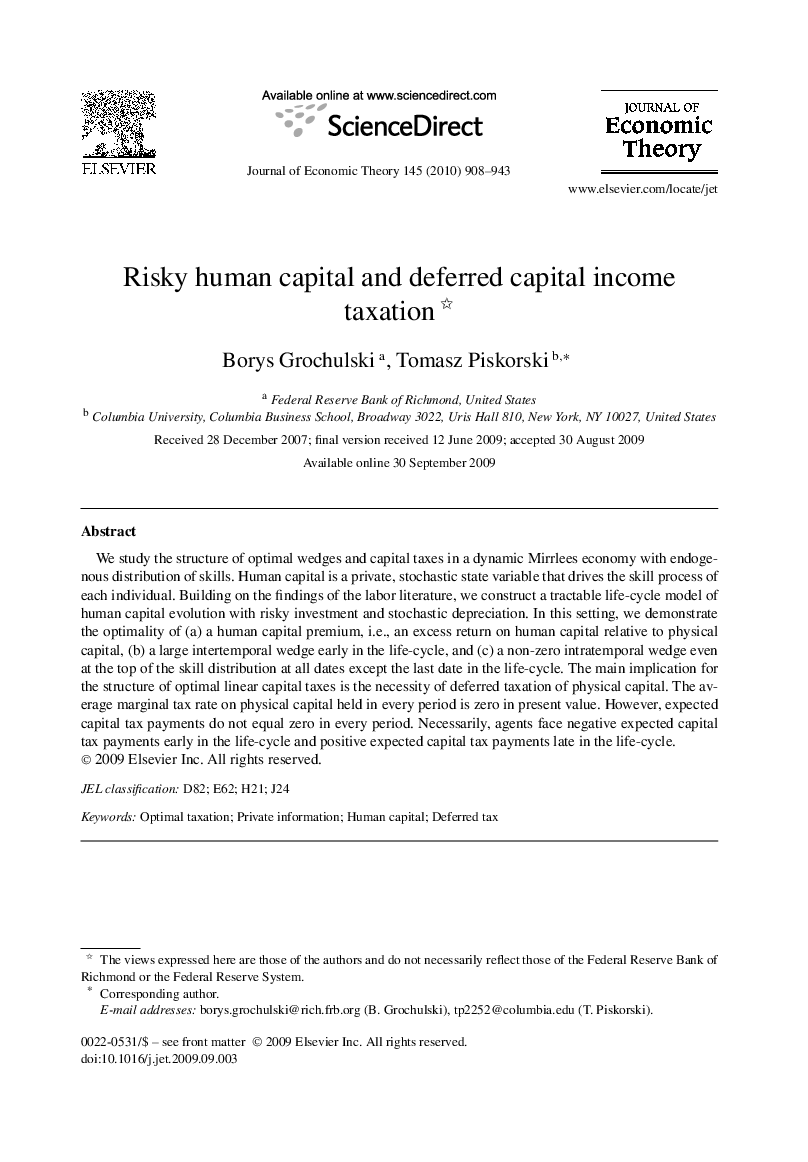| Article ID | Journal | Published Year | Pages | File Type |
|---|---|---|---|---|
| 957478 | Journal of Economic Theory | 2010 | 36 Pages |
We study the structure of optimal wedges and capital taxes in a dynamic Mirrlees economy with endogenous distribution of skills. Human capital is a private, stochastic state variable that drives the skill process of each individual. Building on the findings of the labor literature, we construct a tractable life-cycle model of human capital evolution with risky investment and stochastic depreciation. In this setting, we demonstrate the optimality of (a) a human capital premium, i.e., an excess return on human capital relative to physical capital, (b) a large intertemporal wedge early in the life-cycle, and (c) a non-zero intratemporal wedge even at the top of the skill distribution at all dates except the last date in the life-cycle. The main implication for the structure of optimal linear capital taxes is the necessity of deferred taxation of physical capital. The average marginal tax rate on physical capital held in every period is zero in present value. However, expected capital tax payments do not equal zero in every period. Necessarily, agents face negative expected capital tax payments early in the life-cycle and positive expected capital tax payments late in the life-cycle.
